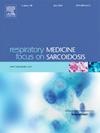Association between empiric multidrug-resistant coverage and in-hospital mortality in adults with sepsis who received empiric anti-MRSA therapy
IF 3.1
3区 医学
Q2 CARDIAC & CARDIOVASCULAR SYSTEMS
引用次数: 0
Abstract
Purpose
The aim of this study was to investigate the association between empiric MDR coverage and in-hospital mortality among adults with sepsis who received empiric anti-MRSA therapy.
Materials and methods
This was a nested case‒control study using Japanese nationwide data from a medical reimbursement system between 2010 and 2017. Patients with sepsis and using empiric antimicrobials with MRSA coverage were extracted. Among them, we enrolled patients with MDR coverage and those without MDR coverage via propensity score matching on the basis of their baseline characteristics.
Results
Both the MDR coverage cohort and the non-MDR coverage cohort each comprised 6,068 patients. The MDR coverage group had more acute organ dysfunction than the non-MDR coverage group did (moderate: 34.0 % vs. 24.3 %; severe: 5.0 % vs. 2.7 %, p < 0.001). The MDR coverage group had significantly higher crude in-hospital mortality than the non-MDR coverage group did (22.9 % vs. 16.7 %, p < 0.001). The conditional logistic regression model revealed that MDR coverage and acute organ dysfunction were significantly associated with in-hospital mortality. The interaction between MDR coverage and severe acute organ dysfunction was statistically significant (p for interaction = 0.02). Stratified by severity, in-hospital mortality rates were reversed between moderate and severe (in-hospital mortality rates: mild 16.4 % vs. 12.3 %; moderate 31.6 % vs. 26.7 %; and severe 42.3 % vs. 44.8 %).
Conclusions
Our study revealed that empiric concomitant MDR coverage might be considered for adults with sepsis who received empiric anti-MRSA therapy if they have multiple acute organ dysfunctions, although their population is small.
经验性耐多药覆盖率与接受经验性抗mrsa治疗的成人败血症住院死亡率之间的关系
目的:本研究的目的是调查接受经验性抗mrsa治疗的成人脓毒症患者的经验性耐多药覆盖率与住院死亡率之间的关系。材料和方法:这是一项嵌套病例对照研究,使用了2010年至2017年日本医疗报销系统的全国数据。脓毒症患者和使用具有MRSA覆盖的经验性抗菌剂的患者被提取。其中,我们在基线特征的基础上,通过倾向评分匹配纳入了MDR覆盖和未MDR覆盖的患者。结果:耐多药覆盖组和非耐多药覆盖组均包括6068例患者。MDR覆盖组比非MDR覆盖组有更多的急性器官功能障碍(中度:34.0%对24.3%;重度:5.0%对2.7%,p < 0.001)。耐多药覆盖组的院内粗死亡率显著高于非耐多药覆盖组(22.9%比16.7%,p < 0.001)。条件logistic回归模型显示耐多药覆盖率和急性器官功能障碍与住院死亡率显著相关。MDR覆盖率与严重急性器官功能障碍的交互作用具有统计学意义(交互作用p = 0.02)。按严重程度分层,院内死亡率在中度和重度之间是相反的(院内死亡率:轻度16.4%对12.3%;中度31.6%对26.7%;重度42.3%对44.8%)。结论:我们的研究表明,对于接受经验性抗mrsa治疗的成人败血症患者,可以考虑经验性耐多药覆盖。如果他们有多个急性器官功能障碍,虽然他们的人口很少。
本文章由计算机程序翻译,如有差异,请以英文原文为准。
求助全文
约1分钟内获得全文
求助全文
来源期刊

Respiratory medicine
医学-呼吸系统
CiteScore
7.50
自引率
0.00%
发文量
199
审稿时长
38 days
期刊介绍:
Respiratory Medicine is an internationally-renowned journal devoted to the rapid publication of clinically-relevant respiratory medicine research. It combines cutting-edge original research with state-of-the-art reviews dealing with all aspects of respiratory diseases and therapeutic interventions. Topics include adult and paediatric medicine, epidemiology, immunology and cell biology, physiology, occupational disorders, and the role of allergens and pollutants.
Respiratory Medicine is increasingly the journal of choice for publication of phased trial work, commenting on effectiveness, dosage and methods of action.
 求助内容:
求助内容: 应助结果提醒方式:
应助结果提醒方式:


